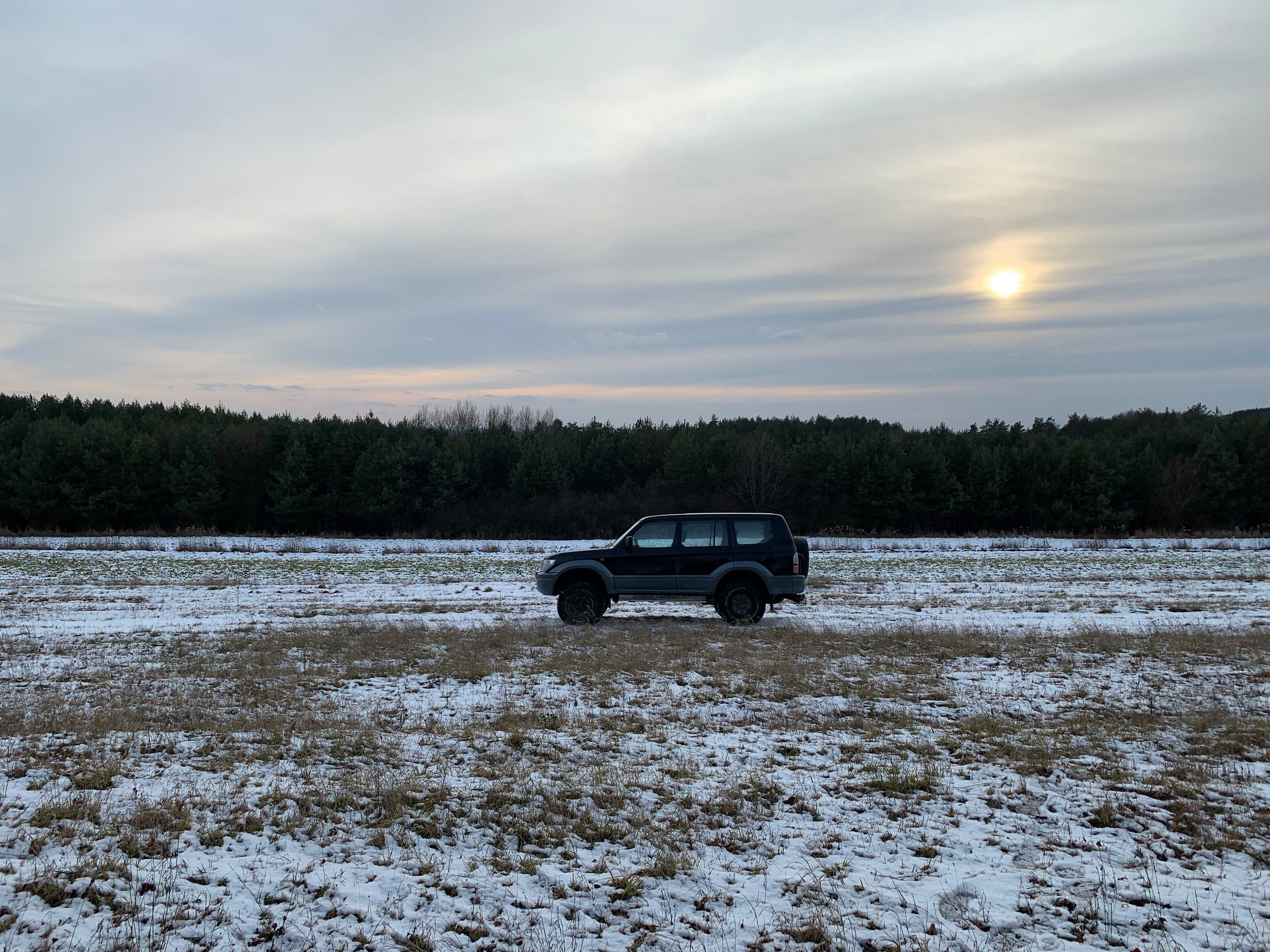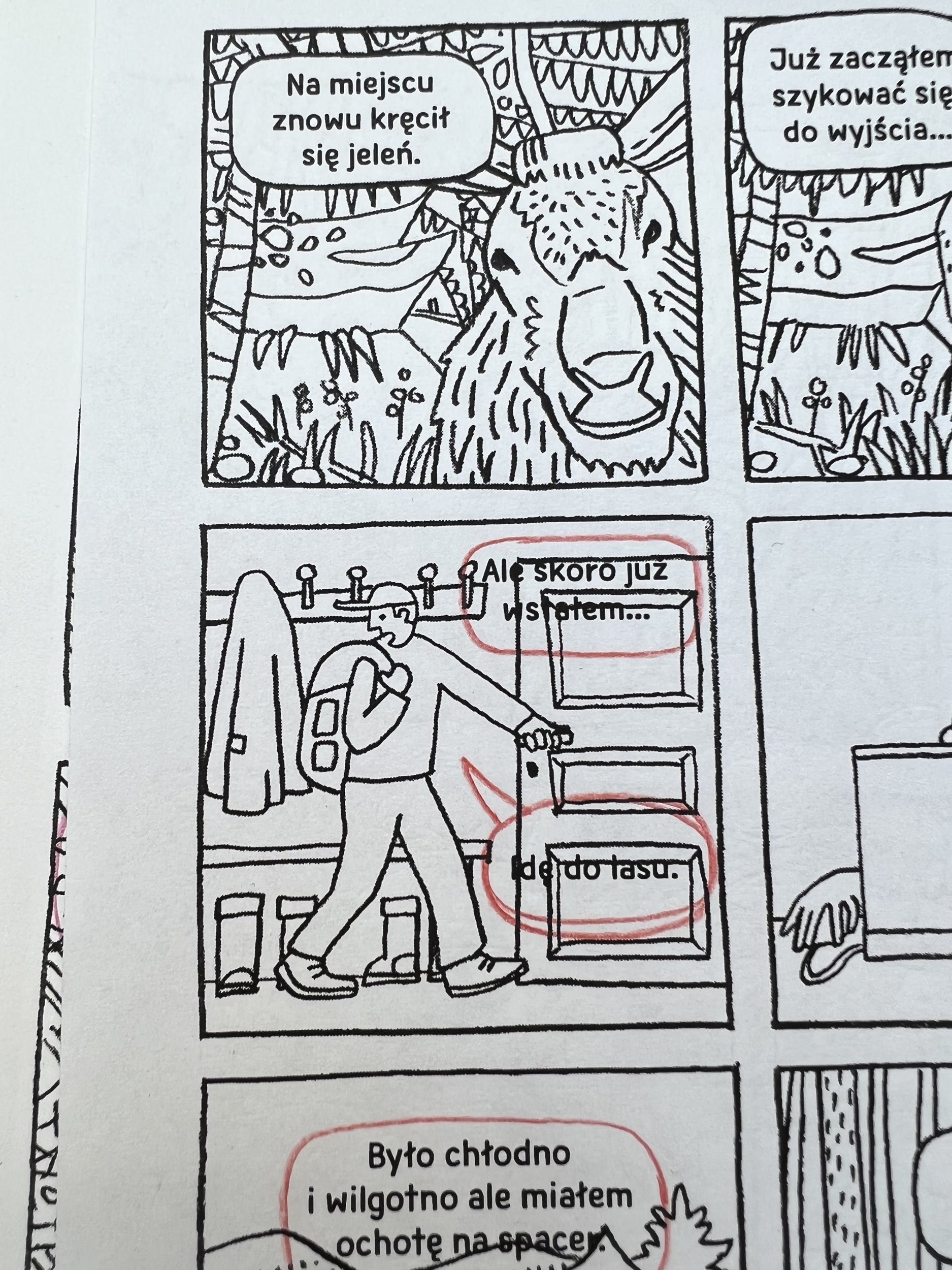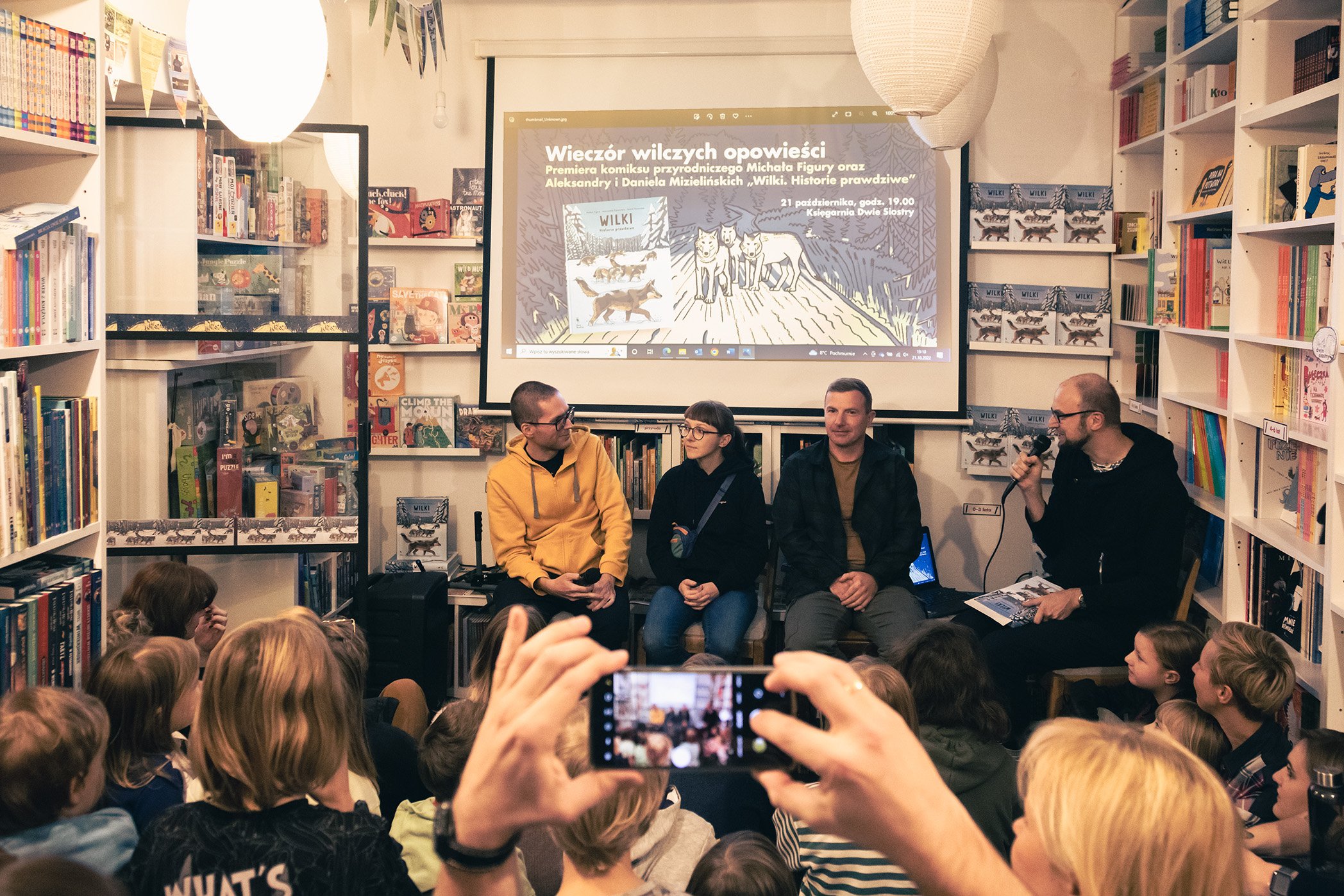Wilki
English title: Wolves
co-author: Michał Figura
Publisher: Wydawnictwo Dwie Siostry
Warsaw 2022
Dimensions: 20 × 25 cm
Hardcover: 268 p.
ISBN: 978-83-8150-222-1
In Poland, wolves are protected by law across the whole country since 1998. This is in part thanks to the work of Association for Nature “WOLF”, a wildlife organization established in 1996. WOLF studies and protects wolves, lynxes and bears, and raises public awareness about these species. This book lets you take a closer look at the work of the key figures at the WOLF organization: Michał Figura (Member of the Board), Sabina Pierużek-Nowak (co-foundress and president), and Robert Mysłajek (co-founder and vice-president) and of course the wolves themselves.
Throughout the book Michał is going to be your guide. He’ll tell you the stories of 7 wolves and 1 wolf pack. He’ll explain all of the methods and tools he’s using during everyday work. You’ll find out about the structure of wolf packs and the size of a wolf’s territory, you’ll learn why they roam far and wide, what they eat, why they howl and why they sometimes do a poo in the middle of the road.
Michał will also explain how his organization collects information: how it tracks wolves and counts them, what you can learn from wolf poo and the leftovers of their meals, how camera traps and GPS collars work, how can you collect wolf DNA and what you can learn from it – and how to put a collar on a wolf! Michał will also tell you about the major threats to Polish wolves. Large predators face a struggle for survival in a world in which humans occupy all land, build impassible motorways, poach with snares and rifles, and try to tame wild animals or help them without knowing how.
In a country were humans occupy every piece of land wild animals can’t survive without our help. To be able to help we can’t be guided by emotions but by knowledge. In broader perspective this is what this book is about – a few restless people who dedicated their life to study and protect big carnivores.
The idea for this book came to us unexpectedly. It was 2018 and we were still working on Which Way to Yellowstone? where on page 31 there is a infographic showing the role of wolves in the Yellowstone ecosystem. After completing that chapter we wanted to go back to Yellowstone and go for a wolves watching tour. Yellowstone is a unique place to do that. Because of vast open spaces you can watch wolf families from a great distance without disturbing them.
Unfortunately we knew that this trip wouldn’t happen for us in foreseeable future. Why? Because just 3 years earlier our twin boys were born and at that time log distance flights with them were… problematic.
So in 2018 Aleksandra started looking for something similar in Poland. She found a workshop near Węgierska Górka (look at the map above, it’s in the South of Poland) in which during the day Michał Figura would track wolves with you and in the evening he would give lectures about ecology of the species. This was supposed to be our first trip without children since they were born so I was not too keen on the lectures.
The workshop opened with an evening lecture. After 15 minutes we realized that we knew nothing about wolves. Also Michał is an amazing talker so the whole experience was captivating. We stayed up late watching wolves and lynxes captured on trail cameras. After going back to our room we started figuring out how to convince Michał to make a book with us.
On Monday we called Michał and asked him if he wanted to work with us for the next three years. He sad yes although I don’t think if he knew what he was agreeing to.
Short after that we signed up for another workshop with Michał. This time in winter. This was a beginning of a new routine. We still had Which Way to Yellowstone? and Have a Bite to finish but we were convinced that this is going to be our next big project. We only needed to spread our passion to the publisher. We came up with a plan to arrange with Michał a private workshop for Ewa Stiasny, Jadzia Jędryas (they own and direct the publishing house), Maciej Byliniak (chief editor), and Katarzyna Domańska (head of promotion). We knew that if they hear just a single Michał’s story they would green-light the book.
Ewa and Jadzia not only agree to this idea but decided to make an integration trip out of it.
Almost 20 people came and after the first lecture Ewa, Jadzia, and Maciej agreed that we should do the book.
Preparations
Notes
Since getting a green light for the book we’ve been talking with Michał every day. Additionally on each Thursday we recorded our conversations. On that days we were more prepared. Michał usually answered some questions or told about specific situation trying to remember as much details as possible (what was he and others wearing, what was the weather like, who else was present at the scene and so on).
The amount of data we were collecting was almost overwhelming. Apart from talking with Michał we had a huge directory of scientific publications to read through. That alone required getting used to as most of those articles are written in a very specific way. If we didn’t have experience in that kind of work we would drawn.
After working on Have a bite we knew that we need a better system for storing notes. Fortunately a year before we read a book called How to Take Smart Notes by Sönke Ahrens and we immediately adapted Nikolas Luhmann’s method. Thankfully the ROAM Research app was just lunching and we could easily and quickly switch from making linear notes in Google doc to bi-directional links in ROAM. That really changed the way we work and even think. This system helps you see connections between information from different sources. It also generates a list of notes (or just paragraphs) where this topic or idea was mentioned. So after writing notes on wolf territories, diet, family structure, and dispersal we had a draft of a chapter about counting wolves generated almost automatically.
Visual references
Another big task was to gather all needed images and videos. Michał was sending us everything we asked for. We also had a lot of our own images and in case of many roads or villages we used images from Google Earth and Goole Street View. All of those were stored (or just indexed in case of videos) in our ROAM database. Photos of all people appearing in the book, videos of wolves, locations, tools, streets, bystanders and even cars that were used. Drawing Michał’s Toyota was so hard for us that we had a separate folder with photos of every possible combinations of viewing angles with open or closed doors, from the outside, from inside, from driver or passenger perspective.
This led to a bizarre obsession were every panel in the comic book is drawn as close to a real life counterpart as possible. Some of the examples of juxtaposition of a photo and our drawing are shown on the first pages of the book, you can see even more examples down below but the point is that we have a few references for every image in the book.
First draft
Since we’ve heard Michał’s talk for the first time we knew that what caught our attention were stories describing a life of a single wolf or a pack of wolves. Also all mentioned wolves had names which is great from a storyteller perspective. We decided that all information about the ecology of the spices and Michał’s work would be interwoven between retelling of specific events.
This documentary approach was new for us. And that made us very exited about the project.
While planing the structure of the book we laid out all of the informations in an order from least to most complex. We started with descriptions of appearance and methods of collecting information (tracking, GPS collars, trail cameras), then we could proceed to more involved concepts like counting wolf population or resolving human-wolf conflicts. A wolf from each chapter would be a vehicle to introduce new ideas.
Michał approved this approach so we could start writing.

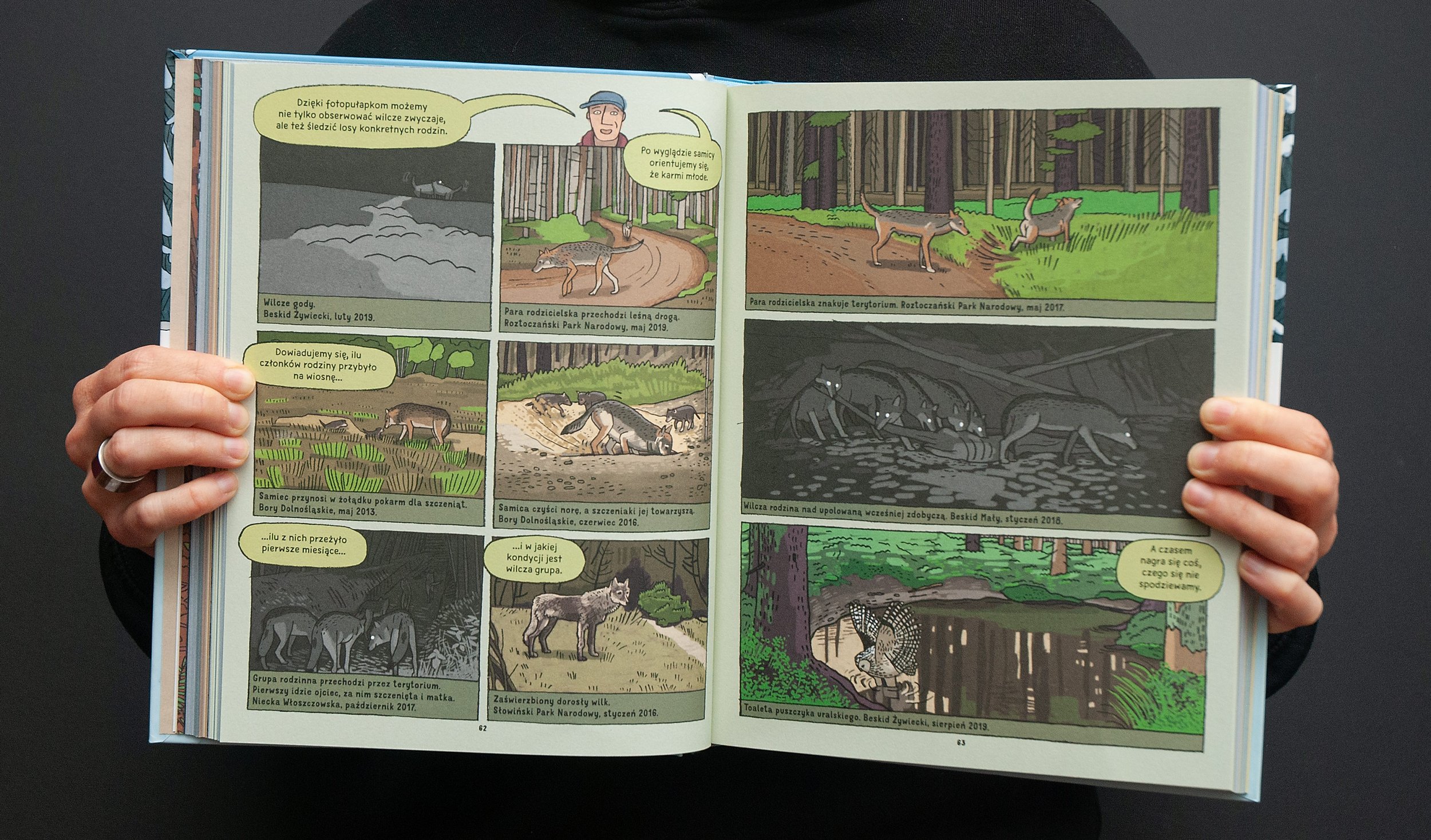
The visuals
I must admit that figuring out how this book is going to look didn’t took us long. Our visual references were so rich in astonishing images that we just started drawing and after a day or two we ended up with a ready concept (character design, environments, colors, etc.). Michał immediately accepted our vision although his depiction is probably most simplified among all characters appearing in the book.
The workflow of drawing finale pages was not that different from our previous books. The only difference was that this time we included one additional step for a more legible storyboard than we’re used to. That is because usually we’re the only ones who need or even read our storyboards. This time Michał had to approve every page before we started drawing (we never worked with anyone like that before).
After finishing the synopsis for the whole book we switched our focus to individual chapters. After one was completed we moved to another.
Before drawing anything we needed a final script. That had to be approved by Michał which took two or three iterations. Then we could start working on the first draft of a storyboard. As you can see above this was barely readable even for us so we needed an additional step of creating a nicer storyboard for Michał. After getting the final approval we could apply our usual workflow. You can see examples of all of the steps above (click them to see the descriptions).
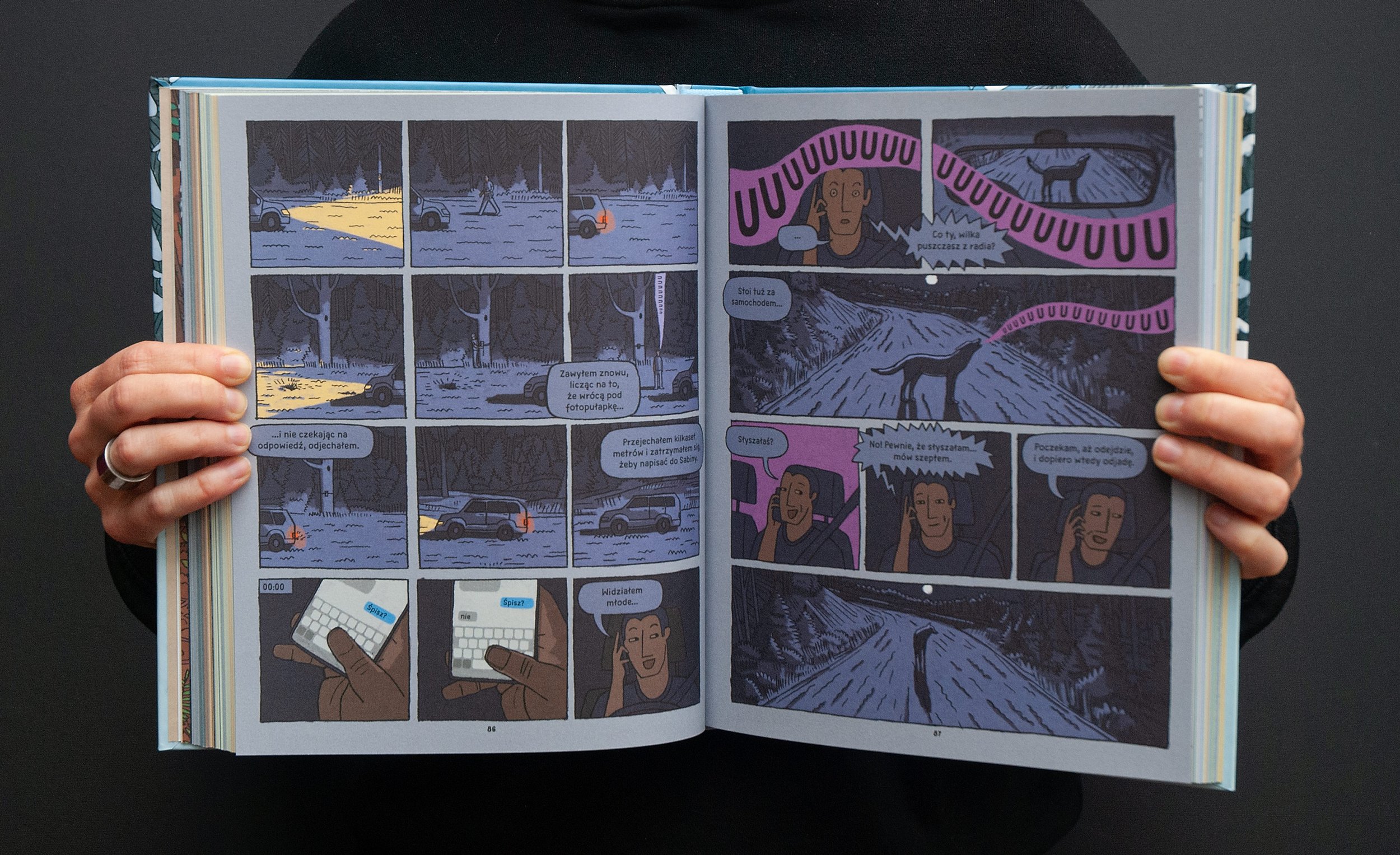

The heroes
During the making of the book we had some concerns about the reception of our drawings by the people we were drawing. We knew that Michał was fine with what he saw but what about the others? We were especially afraid about Sabina and Robert (although I think Robert is the most accurate depiction I ever drawn). They are a huge deal in the science community both in Poland and abroad. We were afraid that they would not appreciate this cartoony look. We were constantly asking Michał if he shown some of the pages to them and did they approve. Same goes for veterinarian Izabela Całus, Agnieszka and Sławek Łyczko from Mysikrólik, and Przemek Stachyra from Roztocze National Park.
Of course they all knew about the book and that they’re going to be in it. But some of them didn’t remember that two years ago Michał talked with them about it. So we anxiously waited for their reaction. Luckily they liked it and we have photos to prove it.
Although almost all our books are non-fiction and they feature real people this was the first time we drew people we know personally (there are some easter eggs exceptions in other books but that’s a different story).
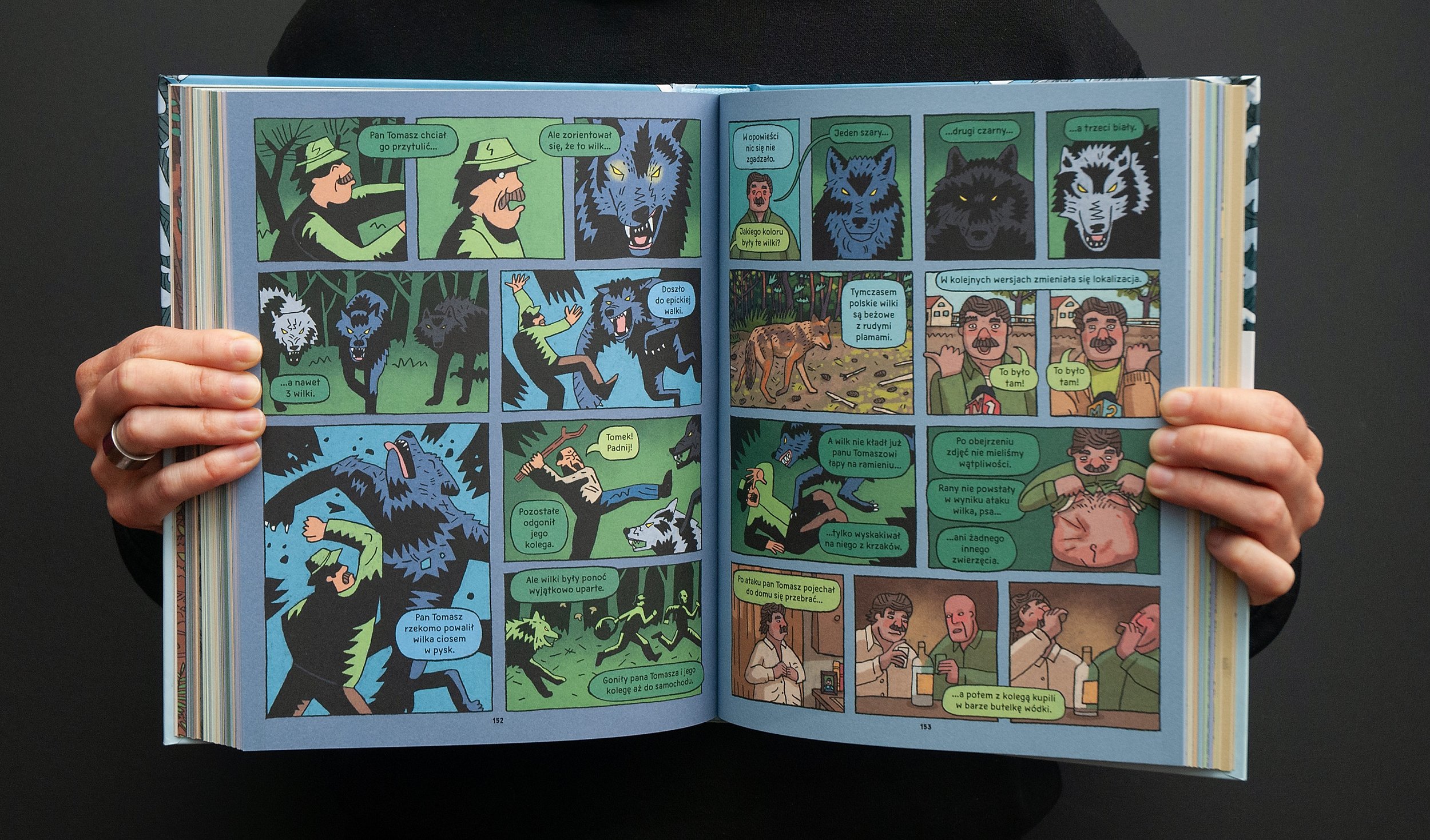
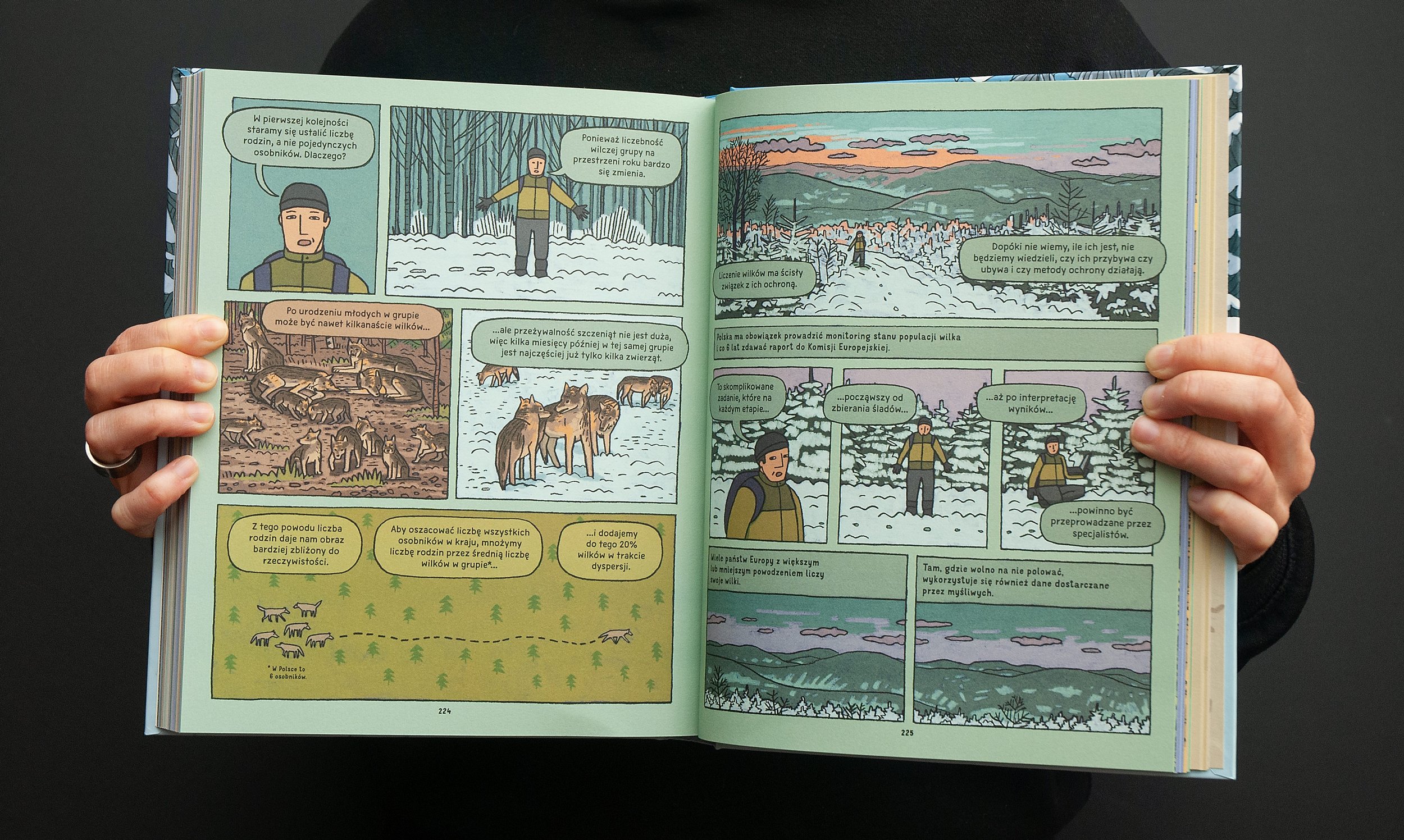

Workshops and promotion
After the book was published we had our first book launch event since COVID. Even though we published 3 books during pandemic there was just no way to organize even a small gathering.
The event took place on October 21 2022 at the Dwie Siostry bookstore. I must say that even though we don’t like crowded places it really felt good to meet with our friends and close this 3 year long chapter of our lives.
This was also the beginning of promotional phase. The following day we run with Michał a workshop with kids where we drew a comic book together. On next weekend we visited Conrad Festival in Krakow and Krakow Book Fair. Other events followed but among the promotional fever we never stoped thinking about the next project we’ll be creating with Michał.
Foreign editions
Italian, Lupi, Storie vere, L'ippocampo, Milano, 2023, ISBN: 978-88-6722-840-9
German, Wölfe, Wahre Geschichten, Moritz Verlag, 2023, ISBN: 978-3-89565-449-7
French, Loups, Enquête sur leur survie et leur protection, Editions Milan, 2024,
ISBN: 978-2-408-04871-6Slovak, Vlky, Skutočné príbehy, Slovart, 2024, ISBN: 978-80-556-6798-0
Czech, Vlci, Skutečné příběhy, Host, 2024, ISBN: 978-80-275-2142-5
Spanish, Lobos, Historias auténticas, Maeva Young, 2024, ISBN: 978-84-19638-99-1
You can find a Google Sheet with a list of all our foreign editions here.



























